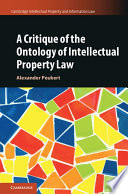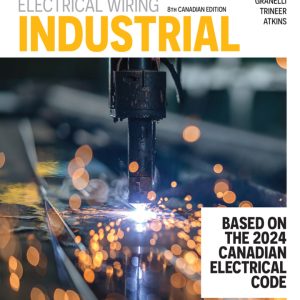Buy Electrical Grounding and Bonding, 6th Edition PDF ebook by author Phil Simmons – published by Cengage Learning in 2021 and save up to 80% compared to the print version of this textbook. With PDF version of this textbook, not only save you money, you can also highlight, add text, underline add post-it notes, bookmarks to pages, instantly search for the major terms or chapter titles, etc.
You can search our site for other versions of the Electrical Grounding and Bonding, 6th Edition PDF ebook. You can also search for others PDF ebooks from publisher Cengage Learning, as well as from your favorite authors. We have thousands of online textbooks and course materials (mostly in PDF) that you can download immediately after purchase.
Note: e-textBooks do not come with access codes, CDs/DVDs, workbooks, and other supplemental items.
eBook Details:
Full title: Electrical Grounding and Bonding, 6th Edition
Edition: 6th
Copyright year: 2021
Publisher: Cengage Learning
Author: Phil Simmons
ISBN: 9780357371305, 9780357371305
Format: PDF
Description of Electrical Grounding and Bonding, 6th Edition:
Completely updated to reflect the 2020 National Electrical Code, Simmons’ ELECTRICAL GROUNDING AND BONDING, Sixth Edition provides a practical guide to the latest requirements in both Article 250 and Chapter 5 of the NEC along with current industry best practices. Clear explanations, real-world examples and colorful illustrations help you master and apply key electrical concepts, such as calculating conductor sizes, reading and interpreting NEC tables, using grounded conductor connections in AC systems, managing installations and sizing, and applying “”green”” practices for energy efficiency and environmental sustainability. Whether you are pursuing a degree program, professional training or an apprenticeship, this must-have resource equips you for career success.Important Notice: Media content referenced within the product description or the product text may not be available in the ebook version.
Table of Contents of Electrical Grounding and Bonding, 6th Edition PDF ebook:
ContentsForewordPrefaceAcknowledgmentsChanges to the NECIntroduction to Grounding and BondingObjectivesThe MysteryDefinitionsReview of Ohm’s Law and Basic Electrical TheoryElectric Shock HazardsReview QuestionsUnit 1: GeneralObjectivesIntroduction250.3 Application of Other Articles250.4 General Requirements for Grounding and Bonding250.6 Objectionable Current250.8 Connection of Grounding and Bonding Equipment250.12 Clean SurfacesReview QuestionsUnit 2: System GroundingObjectives250.20 Alternating-Current Systems to Be Grounded250.21 Alternating-Current Systems of 50 Volts to 1000 Volts Not Required to Be Grounded250.22 Circuits Not to Be Grounded250.24 Grounding of Service-Supplied Alternating-Current Systems250.25 Grounding Systems Permitted to Be Connected on the Supply Side of the Disconnect250.26 Conductor to Be Grounded-Alternating-Current Systems250.28 Main Bonding Jumper and System Bonding Jumper250.30 Grounding Separately Derived Alternating-Current Systems250.32 Buildings or Structures Supplied by a Feeder(s) or Branch Circuit(s)250.34 Portable, Vehicle-Mounted and Trailer-Mounted Generators250.35 Permanently Installed Generators250.36 High-Impedance Grounded Neutral SystemsReview QuestionsUnit 3: Grounding Electrode System and Grounding Electrode ConductorObjectives250.50 Grounding Electrode System250.52 Grounding Electrodes250.53 Grounding Electrode System Installation250.54 Auxiliary Grounding Electrodes250.58 Common Grounding Electrode250.60 Use of Strike Termination Devices250.62 Grounding Electrode Conductor Material250.64 Grounding Electrode Conductor Installation250.66 Size of Alternating-Current Grounding Electrode Conductor250.68 Grounding Electrode Conductor and Bonding Jumper Connection to Grounding Electrodes250.70 Methods of Grounding and Bonding Conductor Connection to ElectrodesReview QuestionsUnit 4: Enclosure, Raceway, and Service Cable ConnectionsObjectives250.80 Service Raceways and Enclosures250.86 Other Conductor Enclosures and RacewaysReview QuestionsUnit 5: BondingObjectives250.90 General250.92 Services250.94 Bonding for Communication Systems250.96 Bonding Other Enclosures250.97 Bonding for Over 250 Volts250.98 Bonding Loosely Jointed Metal Raceways250.100 Bonding in Hazardous (Classified) Locations250.102 Grounded Conductors, Bonding Conductors, and Jumpers250.104 Bonding of Piping Systems and Exposed Structural Metal250.106 Lightning Protection SystemsReview QuestionsUnit 6: Equipment Grounding and Equipment Grounding ConductorsObjectives250.109 Metal Enclosures250.110 Equipment Fastened in Place (Fixed) or Connected by Permanent Wiring Methods250.112 Specific Equipment Fastened in Place (Fixed) or Connected by Permanent Wiring Methods250.114 Equipment Connected by Cord and Plug250.118 Types of Equipment Grounding Conductors250.119 Identification of Equipment Grounding Conductors250.120 Equipment Grounding Conductor Installation250.121 Restricted Use of Equipment Grounding Conductors250.122 Size of Equipment Grounding Conductors250.124 Equipment Grounding Conductor Continuity250.126 Identification of Wiring Device TerminalsReview QuestionsUnit 7: Methods of Equipment GroundingObjectives250.130 Equipment Grounding Conductor Connections250.134 Equipment Fastened in Place or Connected by Permanent Wiring Methods (Fixed)-Grounding250.138 Cord and Plug Connected Equipment250.140 Frames of Ranges and Clothes Dryers250.142 Use of Grounded Circuit Conductor for Grounding Equipment250.146 Connecting Receptacle Grounding Terminal to an Equipment Grounding Conductor250.148 Continuity of Equipment Grounding Conductors and Attachment in BoxesReview QuestionsUnit 8: Grounding of Specific Equipment Covered in Chapter 5 of the NECObjectivesIntroductionClass I, Class II, and Class III Hazardous (Classified) Locations250.100 Bonding in Hazardous (Classified) LocationsArticle 517, Health Care Facilities517.11 General Installation-Construction Criteria517.13 Equipment Grounding Conductor for Receptacles and Fixed Electric Equipment in Patient Care Sp517.14 Panelboard Bonding517.16 Use of Isolated Ground Receptacles517.17 Ground-Fault Protection of EquipmentArticle 547, Agricultural Buildings547.9 Electrical Supply to Building(s) or Structure(s) from a Distribution Point547.10 Equipotential Planes and Bonding of Equipotential PlanesArticle 550, Mobile Homes, Manufactured Homes, and Mobile Home Parks550.32 Service Equipment550.33 FeederArticle 551, Recreational Vehicles and Recreational Vehicle Parks551.76 Grounding – Recreational Vehicle Site Supply EquipmentArticle 555 Marinas, Boatyards, Floating Buildings, and Commercial and Noncommercial Docking Facilit555.1 Scope555.4 Location of Service Equipment555.10 Signage555.13 Bonding of Non-Current-Carrying Metal Parts555.35 Ground-Fault Protection of Equipment (GFPE) and Ground-Fault Circuit-Interrupter (GFCI) Prote555.37 Equipment Grounding Conductor555.53 Ground-Fault Protection555.54 Grounding555.55 Insulated Neutral555.56 Equipment GroundingReview QuestionsAppendix A: Some Fundamentals of Equipment-Grounding Circuit DesignAppendix B: Investigation and Testing of Footing-Type Grounding Electrodes for Electrical InstallatiAppendix C: Understanding Ground Resistance TestingAppendix D: Report of Research on Conduit Fitting Ground-Fault Current Withstand CapabilityIndex





